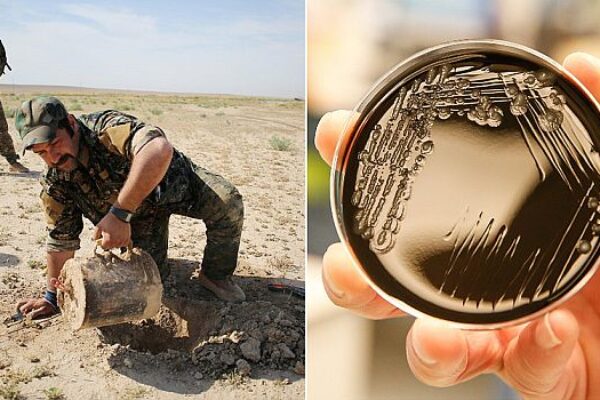
Bacteria biosensors to detect underground explosives
Using synthetic biology science, the company and its partner Worcester Polytechnic Institute will program two bacterial strains to monitor ground surfaces for explosive materials. The first strain will detect the presence or absence of explosives buried underground, and if explosives are detected, the second strain will then produce a glowing light on the ground’s surface.
Remote cameras or unmanned aerial vehicles can then be used to survey large areas for the telltale luminescence.
“We already know that some bacteria can be programmed to be very good at detecting explosives, but it’s harder underground,” says Allison Taggart, Ph.D. and principal investigator for the Bio Reporters for Subterranean Surveillance program at Raytheon BBN Technologies. “We’re investigating how to transport the reporting bacteria to the required depth underground, and then pushing the luminescence up to the surface so it’s easily visible.”
The use of synthetic biology combines principles of electrical engineering with computer science to modify DNA. The Subterranean Surveillance program, says the company, is one example in which advances in synthetic biology are being used to develop sensors that can reveal a variety of subterranean phenomena at a distance.
“Using bio sensors underground could help us save lives as well as detect threats to air quality and the water supply,” says Taggart. “The modular design of the system we’re developing will allow us to swap in different components as needed to detect various kinds of threats and contaminants.”
According to reports, such “Bio Reporters” should be able to sense a phenomenon at least one meter below the surface, propagate a signal to the surface within seven days, and be continuously detectable on the surface at a distance of 10 meters over the subsequent seven days.
Related articles:
New light-trapping sensor promises improved drug, bomb detection
Wearable ‘living sensors’ light up in contact with chemicals
Portable biosurveillance system to subject bacteria to ’20 Questions’
‘Living sensors’ hold promise for ocean surveillance, says DARPA
Living sensors promise real-time leak detection in pipelines
 If you enjoyed this article, you will like the following ones: don't miss them by subscribing to :
eeNews on Google News
If you enjoyed this article, you will like the following ones: don't miss them by subscribing to :
eeNews on Google News




